Building a Customer Research Program (2015-2017)
I built the IBM Cloud Customer Research Program-growing the roster of customers from a handful to 40+ customers. Initially, the program only included Bluemix (platform as a service) customers, but later, it grew to include infrastructure as a service customers too (both are now known as IBM Cloud). Customers ranged in size from 1 to 100k+ employees.
Contributions: UX Research and leadership
Background
When I joined the IBM Cloud team as UX Research Lead, design team members were meeting with a handful of customers who were very generous with their time, but with only a few customers, we were concerned that they were oversampling the same group of customers. We needed to broaden our feedback pool to ensure we were representing all of our customers and not overly taxing the time of our customers. My goal was to grow our roster from a handful of customers to enough customers to provide feedback to the entire Bluemix team.
The process included four stages for each customer: finding customers, getting to know them, getting their ongoing input and ensuring that we engage them productively (and are not making too many requests).
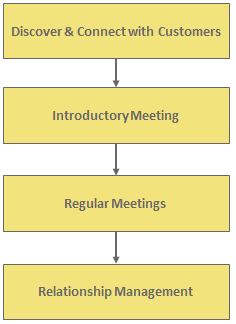
Discovering and Connecting with Customers
Customer Messaging
I found customers using messaging and through sales teams.
Some of our customers responded to a message asking: “Would you be willing to spend a few minutes to help us design the next version of Bluemix?” They typically represented smaller customers and business partners.

Recruiting through Sales Teams
Engaging larger customers meant convincing sales teams of the benefits to their customer. Typically, I met with each sales representative first, walking them through the Customer Research Program. Then they would assess the customer's interest. To facilitate, I created an email message and a program overview presentation that they could share with customers.
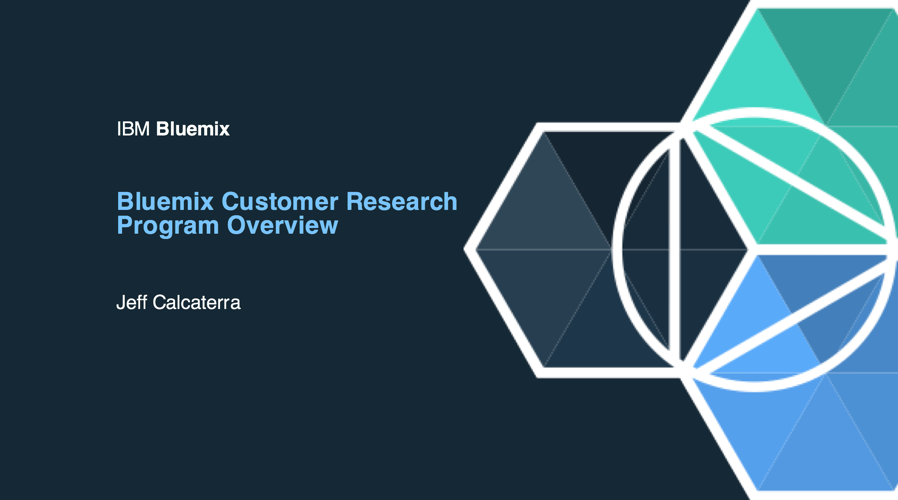
Introductory Meeting
When a customer joined the program, the first step was an introductory interview. All of the questions were on a presentation that I send them in advance. This allows customers to prepare answers in advance and helps customers with limited English.
A slide showed an org chart makes it easier to discuss users and stakeholders. In one of the first of these, I discovered a key role-the Bluemix Center of Competency (CoC) Advocate. The CoC Advocates had different job titles, but were often our most important contact. For simplicity, I called the role the "Bluemix Champion".
Visuals are great in a teleconference, but when I meet customers in person, they can just mark them up them directly.

I used a grid showing permissions to facilitate discussions about tasks and user roles. The responses helped me to understand what each of the roles do. These discussions were used to build the Bluemix Personas.
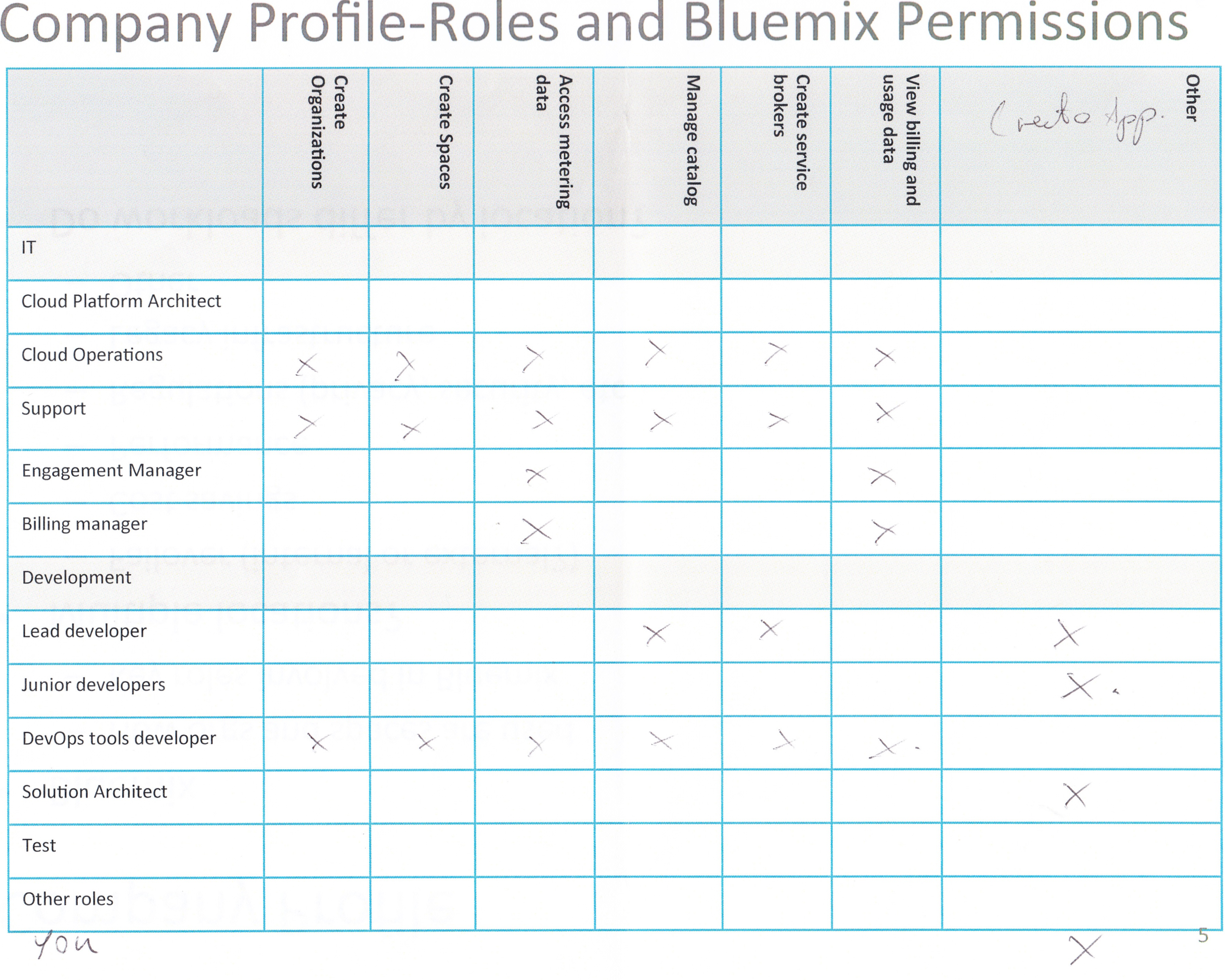
Regular Meetings
Many customers accompanied us throughout the design process and saw the impact of their input from interviews and concepts to wireframes and high fidelity mockups to code. Most of the meetings were done through a teleconference, but meeting customers in person was even better.
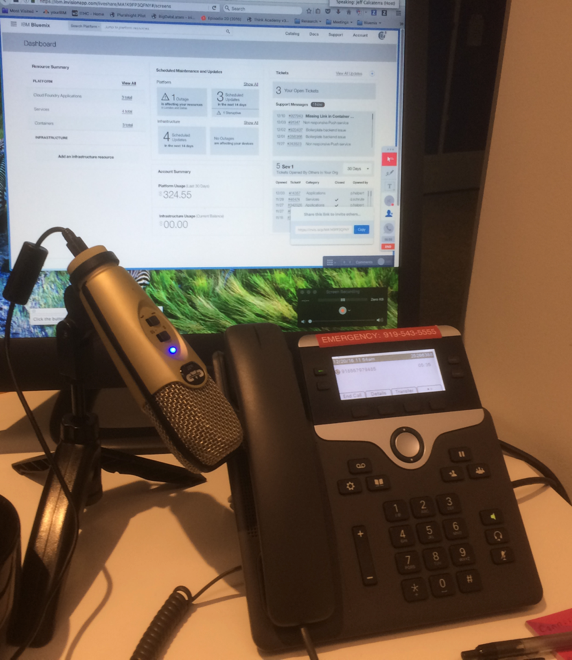

Meetings
- Teleconferences
- Local Meetups
- Conferences
- Customer visits
- Design studio invitations
Studies
- 9 walkthroughs
- 4 usability tests
- 9 surveys
- Persona development interviews
- Design explorations
- and numerous other activities
Topics
- Dashboards
- Cost recovery and billing
- Getting started
- Cloud Foundry Apps
- Navigation
- Catalog
- Personas
- Bluemix and SoftLayer integration
- Enterprise adoption cycle
Relationship Management
I wanted to empower designers to lead their own meetings, and while we always welcomed feedback from customers, I wanted to ensure we were not overwhelming customers with requests. I also wanted to ensure we were not asking redundant questions. Both needed to be accomplished without a lot of overhead. My solution was to give each customer a Design Advocate, who served as a subject matter expert about the customer and also managed the types and frequency of contacts. The Design Advocate would also direct feedback from the customer to the right teams.
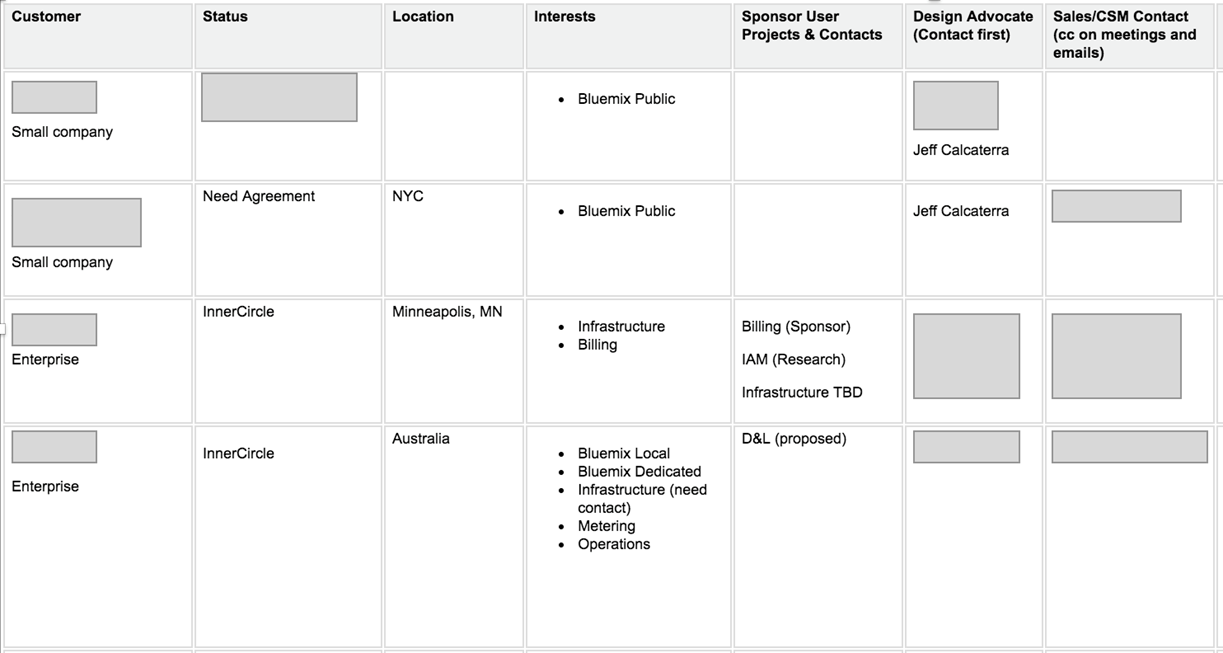
Outcomes
The IBM Cloud Customer Program has been a huge success. During my tenure, I coordinated feedback sessions for all of the major updates to the IBM Cloud environment (15 UX designers) with a roster of 40+ customers.